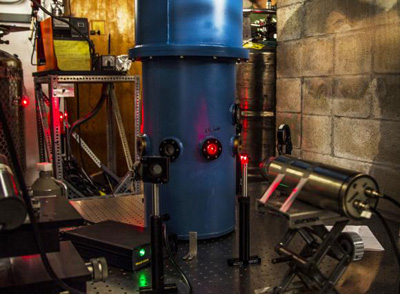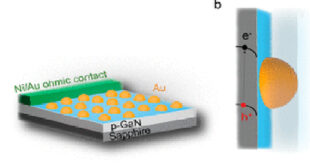W. Wei, Z. Xie, L. N. Cooper, G. M. Seidel, H. J. Maris.Department of Physics, Brown University, Providence, RI, 02912, USA.
Abstract
An electron in liquid helium forces open a cavity referred as an electron bubble. These objects have been studied in many past experiments. It has been discovered that under certain conditions other negatively charged objects can be produced but the nature of these “exotic ions” is not understood. We have made a series of experiments to measure the mobility of these objects, and have detected at least 18 ions with different mobility. We also find strong evidence that in addition to these objects there are ions present which have a continuous distribution of mobility. We then describe experiments in which we attempt to produce exotic ions by optically exciting an electron bubble to a higher energy quantum state. To within the sensitivity of the experiment, we have not been able to detect any exotic ions produced as a result of this process. We discuss three possible explanations for the exotic ions, namely impurities, negative helium ions, and fission of the electron wave function. Each of these explanations has difficulties but as far as we can see, of the three, fission is the only plausible explanation of the results which have been obtained.
Go To Journal of Low Temperature Physics
Significance Statement
Can the wave function of an electron be divided and trapped?
Electrons are elementary particles — indivisible, unbreakable. But new research suggests that the electron’s quantum state — the electron wave function — can be separated into many parts. That has some strange implications for the theory of quantum mechanics.
The blue cylinder in the figure is the dewar used to reach a temperature of around 1 K. Inside the dewar is a canister of liquid helium. An electron injected into the helium repels the helium atoms and forms a bubble (an “electron bubble”). The diameter of the bubble is normally 3.6 nanometers.
The experiment measures the speed with which the bubbles move through the liquid when an electric field is applied. When this is done it is found that different bubbles move at different speeds. From their speed, the size of the different bubbles can be estimated. These objects have been detected in several experiments over the past 40 years but it has been impossible to explain why these objects exist.
The new experiments provide much more detailed information about these objects. They come in at least 18 different sizes. The data appear to rule out the possibility that impurities are involved. The results of the experiment suggest that the slowest moving bubbles, which are the largest, contain the entire wave function of one electron. The faster, and smaller, bubbles contain only a part of the wave function.
The experiment raises some interesting questions that sit on the border of science and philosophy. For example, the experiment implies that the helium does not make a measurement to determine if each bubble contains an electron. If it did, any bubble found not to contain the electron would, in theory, simply disappear. The bubbles found to contain an electron would then be the only ones to survive, and so would all have the same size. And that would be inconsistent with what is found in the lab!
 Advances in Engineering Advances in Engineering features breaking research judged by Advances in Engineering advisory team to be of key importance in the Engineering field. Papers are selected from over 10,000 published each week from most peer reviewed journals.
Advances in Engineering Advances in Engineering features breaking research judged by Advances in Engineering advisory team to be of key importance in the Engineering field. Papers are selected from over 10,000 published each week from most peer reviewed journals.


